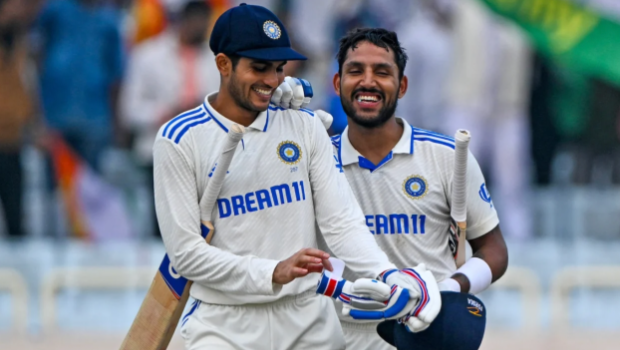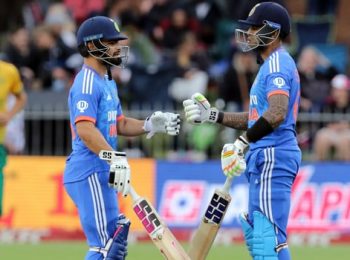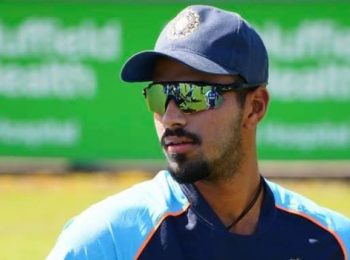India huffed and puffed, and while it didn’t quite blow the house down, by chasing 192 for the loss of five wickets on a gripping fourth day in Ranchi, a famous series win over England was achieved.
To comprehend the significance of this win, we must go back over a month, to the first Test match in Hyderabad. Rohit Sharma’s team, without Virat Kohli, was stunned inside four days by Ben Stokes’ Bazballers. Set a target of 231, India were bowled out for 231 before the close of the fourth day. The team then went into the second Test without Ravindra Jadeja and KL Rahul and pulled off a superb victory in Visakhapatnam to level the series. After a nine-day gap, the Indian team, still missing Kohli and Rahul, recorded their biggest win by runs in Rajkot after reeling England in from 207/2 in 35 overs on day three, when Ravichandran Ashwin had to leave the match due to a family emergency.
India were thus 2-1 up, but having decided to rest the best bowler on either side, Jasprit Bumrah, and with a struggling No 4 in Rajat Patidar and debutant pacer in Akash Deep, there were cracks that could potentially be exposed by England on a tricky Ranchi surface.
And so, India were put under duress on each of the four days of this fourth Test match, but emerged with the series sealed. On day one in Ranchi, Joe Root hit a terrific hundred in a timely return to form as the visitors were revived from 112/5 at lunch to 302/7 at stumps. On day two, India did very well to bowl out England for 353, with Root left stranded on 122*, but then the recalled offspinner Shoaib Bashir jolted the home team with four wickets as the day ended with India 219/7 and trailing by 134 runs on an increasingly misbehaving surface.
Rohit’s captaincy had been defensive, he had burned all three reviews and his decision to bowl Kuldeep Yadav for just 12 out of 105 overs had left many puzzled. Staring at a very tough situation, India found their hero in the 23-year-old wicketkeeper-batsman Dhruv Jurel, who in his second Test match delivered a match-changing innings of 90. India’s last three wickets added 130 runs in the first innings to whittle away at England’s lead and reduce the deficit to 46, with Jurel facing 149 deliveries and Kuldeep 131, which were the most faced by any one in that innings.
A tremendous fightback to keep England just 46 runs ahead, but the momentum was still with Stokes’ team. The situation could easily have slipped out of India’s grasp, but in a pivotal decision, Rohit began England’s second innings on day three with spin in the form of Ashwin and Jadeja and the wheels started to come off. Ashwin took three in his first spell, including two in an over, and finished with 5/51. Kuldeep, under-bowled to the extent that he was not tossed the ball until the 26th over of England’s first innings, starred with 4/22.
An England collapse for the ages was thus orchestrated, with the last seven wickets falling for 35 runs, as Ashwin silenced his doubters with a 35th five-wicket haul in Test cricket. Set a target of 192 to win the match and the series, India took stumps on 40 for no loss. Which meant that they began the fourth day with 152 runs more to get with all ten wickets intact.
Conventional logic suggested it was India’s game to lose, even with the variable bounce on view. And yet, since 2013, India had only once successfully chased a target of 150-plus. And that one instance was the Gabba Test of January 2021, when Australia’s Brisbane fortress was broken for the first time in over 30 years in arguably Indian cricket’s most famous overseas Test victory.
Rohit looked serene as he scored just his second fourth-innings Test half-century while dominating India’s best opening stand in fourth innings since 2008. But then the first wicket fell. Root’s offspin snapped the stand as Yashasvi Jaiswal, who had rattled off two double-hundreds in the series, tried to attack and spooned a catch. From 84/1, India slipped to 99/2 when Rohit sopped out to Tom Hartley’s left-arm spin and nicked a catch to Ben Foakes. One run later, Patidar was snapped up at short leg to give Bashir his sixth wicket of the match. The wobble was on.
Jadeja and Gill went into shells until the lunch break, with India needing 74 further runs to win. Immediately into the afternoon session, an unnecessarily subdued Jadeja chipped a low full toss from Bashir to midwicket. To the next ball, Sarfaraz Khan was out after giving Ollie Pope further catching practice at short leg. At 120/5, India were in danger of sinking to a loss to rival Hyderabad 2024, Southampton, Birmingham and Cape Town 2018, Galle 2015, Durban and Mumbai 2006, Jamaica 2002 and Barbados 1997.
But, underlining why youth has a place in this team, Jurel stood up with his second match-winning contribution of the match. His arrival settled Gill, and the pair finished the job without any fuss. Gill ended with an unbeaten 52 – to follow 100 and 91 in his past three innings – and Jurel fetched himself the Player-of-the-Match award for adding 39 not out to his earlier score of 90. That a 23-year-old and 24-year-old were together at the end, beaming and celebrating a famous Indian win, was justification of the selectors’ faith in two fine batting talents.
Gill was staring at the axe after going 13 Test innings without a fifty, and Jurel was an unlikely pick for the series with just 15 first-class matches before his Test debut, as well as very little India A exposure. But together the pair saw their team over the finish line, which just shows how if the right blend of seniors and youngsters are picked, victories can be fashioned.



























